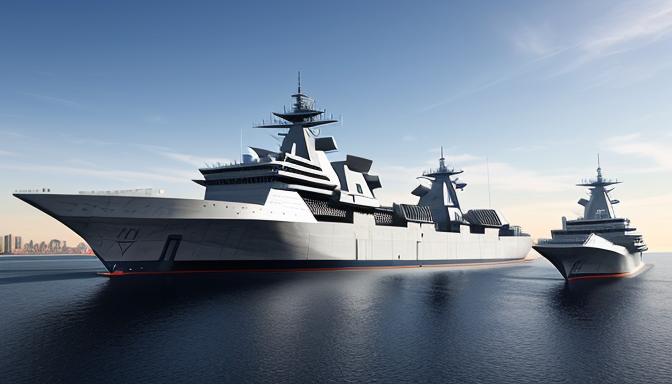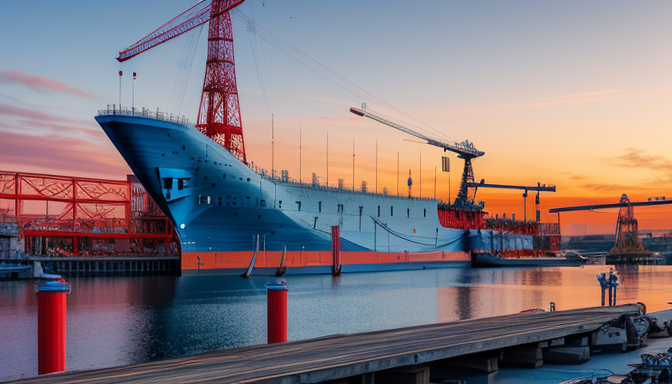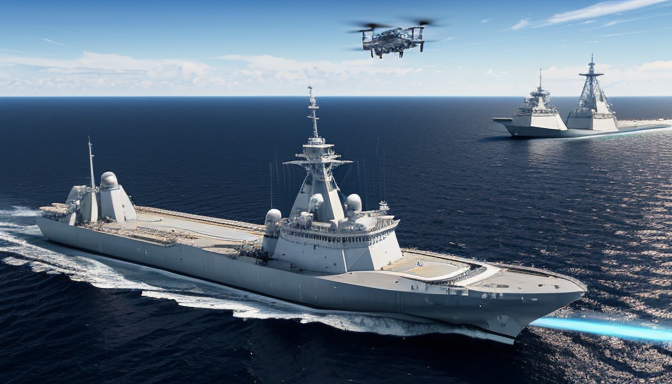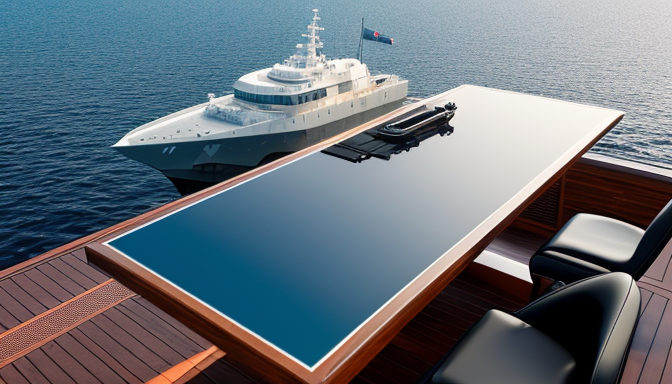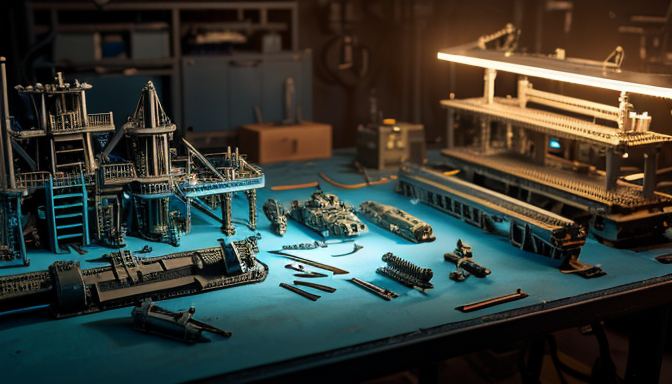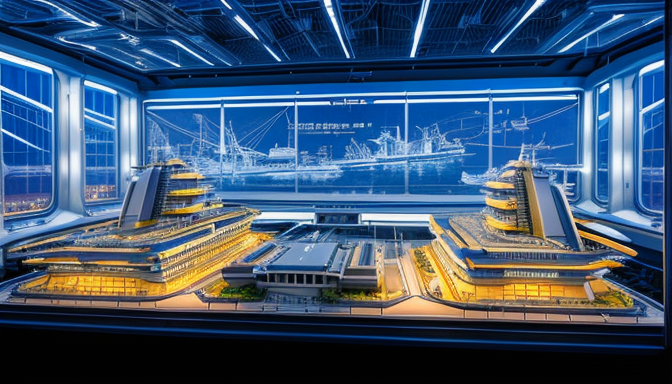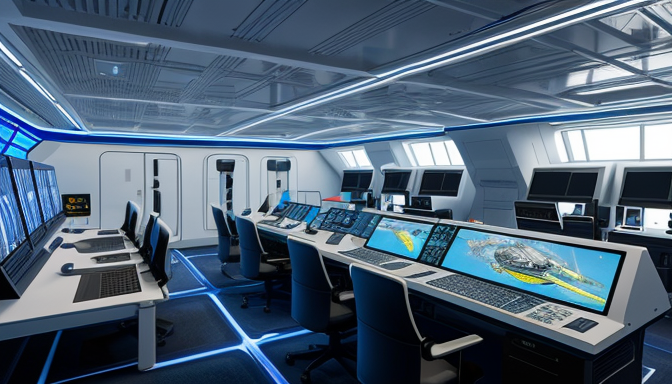The Role of Technology in Revolutionizing Naval Design
In today’s fast-paced world, technology plays a pivotal role in transforming naval design, making it more efficient, safer, and incredibly advanced. Imagine a ship that not only glides through the water but does so while minimizing its environmental impact. This is not just a dream; it’s the reality we are crafting with innovative ship designs that incorporate green propulsion systems and sustainable practices. With the ocean as their canvas, modern naval architects are using cutting-edge technology to create vessels that are lighter, stronger, and more capable than ever before.
One of the most exciting aspects of this revolution is the advent of advanced materials. Traditional shipbuilding often relied on heavy metals, but now we see a shift towards composites and lightweight alloys that enhance performance while reducing fuel consumption. This not only makes ships faster but also contributes to lower emissions, aligning with global sustainability goals. For instance, materials like carbon fiber and advanced polymers are being utilized to construct hulls that are both durable and efficient.
Moreover, the integration of design software and simulation tools has drastically changed the way naval architects approach their craft. These tools allow for precise modeling and testing of designs before a single piece of material is cut. Imagine being able to simulate a ship’s performance in various sea conditions without ever leaving the dock! This level of innovation ensures that every vessel is optimized for safety and performance, leading to a new era of naval engineering.
Innovative Materials and Construction Techniques
In the ever-evolving world of naval design, innovative materials and construction techniques are paving the way for a new era of shipbuilding. Imagine a vessel that is not only lighter but also stronger and more efficient than its predecessors. This transformation is largely due to the introduction of advanced composites and alloys that offer superior strength-to-weight ratios. For instance, materials like carbon fiber and aluminum-lithium alloys are becoming increasingly popular, allowing for the construction of ships that are not only robust but also agile in the water.
Moreover, these cutting-edge materials are often complemented by modern construction techniques that utilize automated processes and 3D printing. This means that parts can be manufactured with incredible precision, reducing waste and enhancing overall performance. Think of it as a master chef using the finest ingredients to create a culinary masterpiece; the end result is a vessel that is both aesthetically pleasing and functionally superior.
As we delve deeper into the realm of naval innovation, we can’t ignore the importance of green propulsion systems. These eco-friendly technologies are not just a trend; they are a necessity in today’s world. By integrating renewable energy sources and efficient engines, ships can now operate with significantly reduced emissions. This shift not only benefits the environment but also enhances the longevity and operational efficiency of naval vessels.
In conclusion, the fusion of innovative materials and advanced construction techniques is a game-changer for naval design. The future of shipbuilding is bright, and as these technologies continue to evolve, we can expect to see vessels that are faster, safer, and more sustainable than ever before.

Advanced Design Software and Simulation Tools
In the ever-evolving world of naval design, advanced design software and simulation tools have emerged as game-changers, revolutionizing how we conceptualize and construct modern vessels. Imagine having the ability to visualize a ship in a virtual environment before a single piece of steel is cut. This is the power that today’s technology brings to the table, allowing designers to create intricate models with unparalleled precision. By utilizing cutting-edge software, naval architects can explore various design options, optimizing every aspect from hull shape to internal layouts, ensuring that the final product is not just functional but also innovative.
Furthermore, simulation tools enable engineers to test how a ship will perform under different conditions without the need for physical prototypes. This means we can predict how a vessel will react to waves, wind, and weight distribution, ultimately leading to safer and more efficient designs. For instance, with tools that simulate fluid dynamics, designers can analyze how water flows around the hull, which is crucial for enhancing speed and fuel efficiency. Green propulsion systems are also on the rise, and these tools allow us to experiment with various eco-friendly technologies, ensuring that our naval fleet is not only powerful but also sustainable.
As we look to the future, the integration of artificial intelligence and machine learning into these design processes will likely lead to even greater advancements. Imagine algorithms that can suggest the most efficient designs based on historical data and current trends! The possibilities are endless, and the journey towards more innovative and environmentally friendly naval vessels is just beginning.
Frequently Asked Questions
- How has technology changed naval design?
Technology has revolutionized naval design by introducing innovative materials, advanced software, and simulation tools that enhance efficiency, safety, and performance. Imagine ships that are lighter yet stronger, allowing for faster and more agile vessels!
- What are some examples of innovative materials used in modern naval design?
Modern naval design often incorporates materials like carbon fiber and advanced alloys. These materials not only reduce weight but also improve durability, making ships more resilient against harsh ocean conditions.
- How do simulation tools benefit naval architects?
Simulation tools enable naval architects to visualize designs and test them in virtual environments before actual construction. This means fewer costly mistakes and a streamlined design process, akin to a pilot practicing in a flight simulator!
- Are there safety benefits to using advanced technology in naval design?
Absolutely! Advanced technology enhances safety by allowing for better risk assessment and management during the design phase. With improved accuracy, designers can foresee potential issues and address them before they become real problems.
